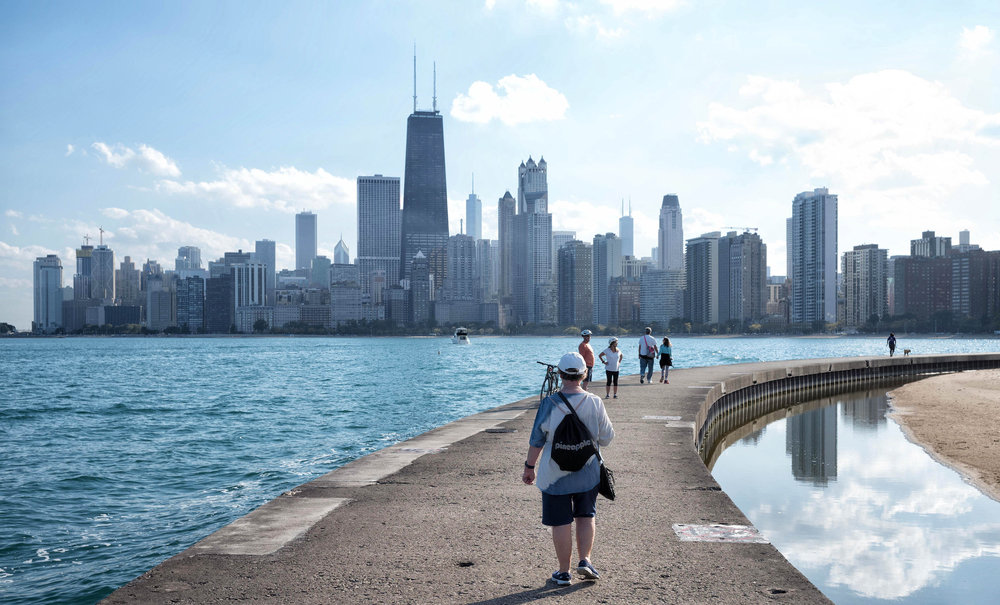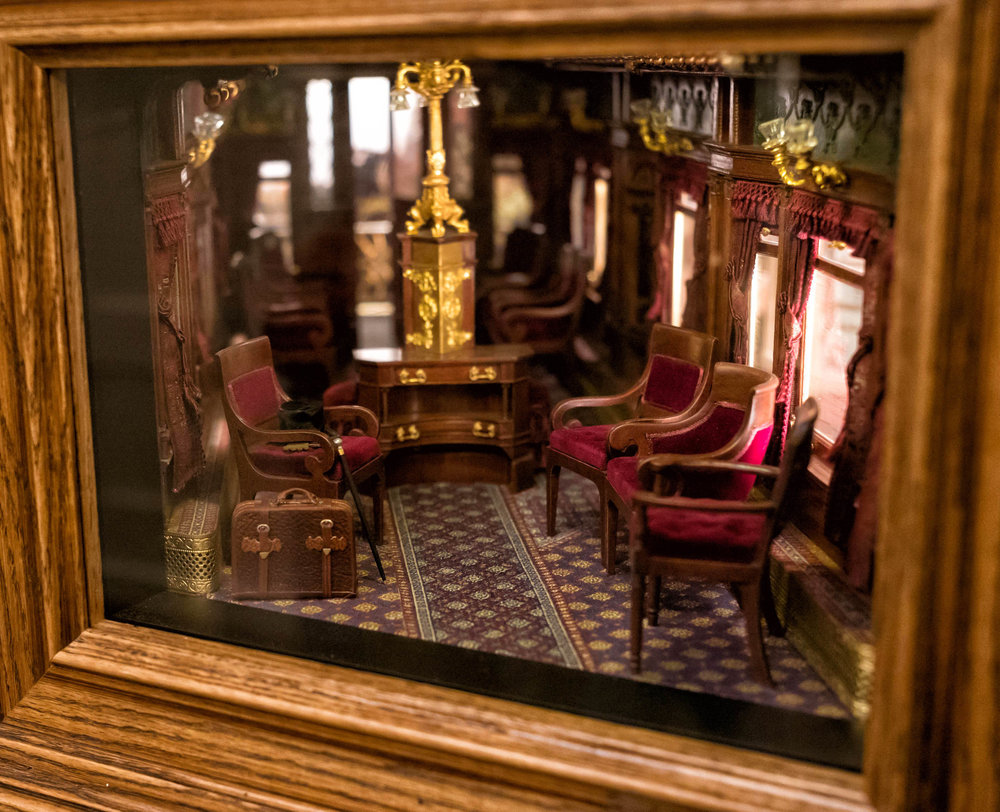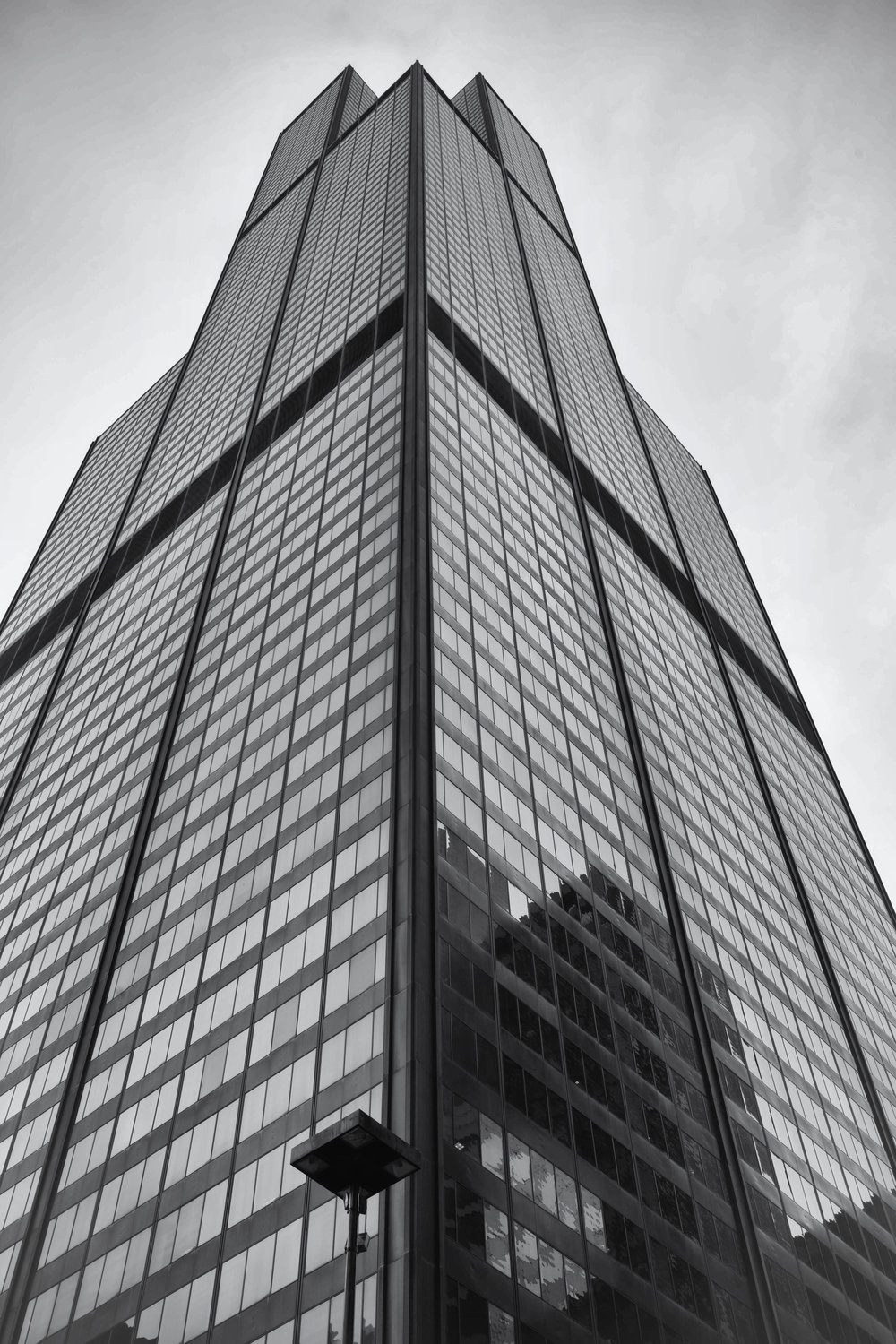
Last year I joined the Leica Historical Society of America (LHSA), now also known as The International Leica Society. I have had three articles published in the Society’s magazine, Viewfinder, based upon articles originally published on Macfilos. I decided earlier this year to attend the LHSA’s annual meeting in Chicago, on October 6-7, with my wife Laura. After I had booked for the event I was asked to present my images from Greece and Syria which were previously published in Macfilos here and here which I was delighted to do.
The presentation went well from my perspective and the feedback I got was encouraging. The event itself was excellent, with many interesting presentations — including one on Silver Efex (how long will we have that?) from Bill Royce, another on Leica Miscellania by Jim Lager (whose books are a staple for collectors and a central part of my Leica book collection). Then came a presentations by Magnum photographer Constantine ‘Costa’ Manos on his life’s work and a fascinating discourse on the development of the digital M by Stefan Daniel of Leica AG.
On the last evening there was a dinner at which Jim Lager, who was a co-founder of LHSA along with Rolf Fricke, now President Emeritus of LHSA, paid a tribute to Rolf and all that he had done for the LHSA.

Also at the dinner there was a series of auctions to raise funds for the LHSA Philanthropy Fund, which is intended to assist young talented photographers. One of the auctions was for a series of books by Costa Manos. Here is Costa with his book of photographs of Greece and its people, which was about to be auctioned.

One of the events I really enjoyed was the launch of an English translation of Ulf Richter’s book Oskar Barnack – From the Idea to the Leica. The translation is by Rolfe Fricke. It is an excellent book, which I can wholeheartedly recommend and, naturally, I purchased a copy.

I will leave the description of the rest of the AGM to the LHSA which will provide more details on its website, magazine and Facebook page etc.
LHSA had organized two trips for members in Chicago. The first of these, which is almost an essential for all visitors to Chicago, was the Architectural Boat Tour on the Chicago River. Chicago is famous for its architecture and some people refer to a ‘Chicago School’ of architecture. A lot of the most wonderful architecture lies along the Chicago River. The boat services are not just for tourists and there are water taxis to serve the local population. As well as the wonderful buildings, many of the bridges, which are marked with street names, are old lifting bridges complete with ‘control towers’. Here are some examples of what is to be seen on the Chicago River.





The last photo above shows the riverside walkway much used by Chicago inhabitants. On the left of that photo, the vast bulk of the Merchandise Mart appears. This building was so big that at one stage it even had its own postal code. It was once the building with the largest floor space in the world, eventually being surpassed by the Pentagon.
The Chicago River flowed into Lake Michigan in the past, which caused more than a little pollution. The story of the reversing of the Chicago River is told here . When we had finished our trip on the river we went out towards Lake Michigan, passing some Fire Department Boats at an old pier, to get a spectacular view of the skyscrapers of Chicago poking their heads into the clouds.


On the second day of the meeting LHSA organised a bus trip through Chicago’s Near North Side. Our driver was an entertaining character called Antoine who was a big fan of the Chicago Cubs baseball team. Chicago has many sports teams, but this year the Cubs were the big favourites, having won the World Series in 2016. While we were there the Cubs won a series against the Washington Nationals, only to be defeated in the next series against the LA Dodgers. So no repeat World Series for the Cubs in 2017. Here is Antoine followed by a statue of Cubs‘ great Ernie Banks and the famous entrance to Wrigley Field, the home ground of the Cubs.



We were due to fly to New Orleans after the AGM had ended, but a Hurricane called Nate appeared and was heading towards New Orleans. There was talk of a nine-foot storm surge, among other nasties, so we cancelled our trip to New Orleans and stayed on in Chicago. It seems that during the night Nate turned east and New Orleans was spared, but we did not regret staying in Chicago.
The Chicago marathon took place the next day, but in a city as big as Chicago there was still plenty to do. The weather was beautiful and, as we crossed the Chicago River, the Trump and Wrigley buildings made for a nice contrast against the blue sky.

Our first stop was at the Millennium Park

The Millennium Park is the home of what Chicagoans call ‘The Bean’, more properly known as the Cloud Gate sculpture by Sir Anish Kapoor . This is almost the perfect sculpture for today’s image conscious, selfie-mad and Facebook-driven world where folks can spend hours looking at and photographing themselves in strange shapes so that they can send the freshly taken images to their family and friends all around the world.



Click to enlarge cropped images
The woman in pink on the left of the photo (above right) had her photograph taken in that pose about twenty times. I suppose she was trying to get it right. Anyone who does not believe that smartphones are taking over the world of photography should take a trip to The Bean.
Also in the Millennium Park is the Jay Pritzker Pavilion, which is a spectacular open-air theatre and performance space.


Click cropped images to see full frame enlargements
We then went on to visit the Art Institute of Chicago, which was nearby. The Institute contains many wonderful works of art such as Hopper’s Nighthawks and Grant’s American Gothic. I rarely take photos of works of art (it’s like stealing an image belonging to another person), but I could not resist taking a shot of this wonderful set of three windows by Marc Chagall. They are as much part of the architecture as they are works of art.



Click cropped images to enlarge
The Institute also had a wonderful photography section with works by many greats from Fox Talbot to Stieglitz to Cartier Bresson and Dennis Stock. Just beside this was a wonderful display of miniature rooms, which were conceived by Mrs James Ward Thorne and constructed between 1932 and 1940. Again I could not resist taking some photos. The first of these is a miniature room and the second one shows the inside of a railway carriage.


When we came out of the Institute we met these drummers who were having a good day, not just from the people coming out of the building, but also from the crowds gathered there after the marathon.

The following day we walked along the beach at Lake Shore Drive which fronts onto the huge body of fresh water that is Lake Michigan , which is 494 kms long and 190 kms wide at maximum. It is a strange sight to see such giant skyscrapers sitting just beside a beach – see top photo. It is a marvellous facility for the people of Chicago who want to keep fit by running or cycling or by other means. The poles on the beach seem to be multi-purpose for a range of functions, ranging from using volleyball nets to just hanging your hat or beach bag.






Click on cropped images to see full frame
That building which looks like a ship behind the bicycles is for all amenities available to beach users.
The next day we visited the Chicago Cultural Centre in the old city library building. Most of the displays inside related to architecture, but one really caught my eye and caused me to again break my rule about photographing exhibits. It was a strange exhibition showing modern buildings juxtaposed alongside buildings damaged in the Middle East conflict. In the middle of these was this photo of Krak des Chevaliers in Syria, which had featured prominently in my presentation on Syria to the LHSA just four days earlier.

The old library building was itself the real star exhibit, featuring a Tiffany glass dome, a grand staircase and some wonderful old rooms converted to exhibition spaces.



Click on cropped images to see full size
When we left the Cultural Center we went to the Marshall Field Building on North State Street in the Loop District. This is now a Macy’s Store, which features this wonderful ceiling.

Further down North State Street we saw this giant multi-storey mural of one of my musical heroes who I had met in Dublin in December 1970. This is blues great Muddy Waters (real name McKinley Morganfield) who was one of the main originators of the Chicago blues style, which was much copied in the 1960s by British groups like the Rolling Stones, who, in fact, named themselves after one of his songs.

We had been thinking about going to the top of the Hancock Tower (left below), which was just beside our hotel, but we realised that it was not far from North State Street to the Willis Tower (formerly Sears Tower and right below), which is, in fact, the tallest building in Chicago at over 1,400 feet. (Hancock is now 4th).


Click on cropped images to see full size
When we got to the top of the Willis Tower we saw these Amish people taking in the scene below, which is shown in the middle photo. The last photo shows the view towards the Chicago River where we had taken the boat tour some days earlier.



Click on cropped images to see full frame
On the way back from the Willis Tower we went for a short trip on the “L’ train, which is almost mandatory for visitors to Chicago. Many of the streets in Chicago have rail track above them as the photo on the right below shows.


Click on cropped images to see full size
On our last day we went by the former Shriner Medinah Temple on North Wabash Avenue, which is now a Bloomingdales store. This was not only a Shriner Temple, but it was also a theatre seating 4,200 and a recording studio (for, among others, The Chicago Symphony) at various times. It is imprinted in my memory for many years because Louis Armstrong , who first came to Chicago from New Orleans in 1922, recorded what became known as the Great Chicago Concert in the Temple on 1st June 1956. The photos below seem to show what may be the remnants of the old stage curtains just behind the escalator.




Click on cropped images to see full size
For our final afternoon we went along the walkway beside the Chicago River. I always feel you can capture more by walking about a city as this gives time to see things and compose and take photographs.


Click on cropped images to see full size
The following day we returned home to discover that Hurricane/Storm Ophelia was on her way to Ireland. We had, however, thoroughly enjoyed our stay in Chicago, a lovely city with very friendly people. We will, hopefully, get to New Orleans, hurricanes permitting, some day soon.
Finally, a few technical notes. I used the Leica M10 mainly with the 24mm Elmar and the 35mm Summicron. I brought the EVF Visoflex with me for the 24mm lens, but I stopped using it. The EVF is inclined to rotate when you put your eye up to it making it more difficult to frame photos as desired. I should probably have brought some Blu Tack with me to stop the rotation.
I have a number of other 24 mm viewfinders, the best of which is the Frankenfinder, which I left at home in order to reduce the size of my kit. In Chicago I mainly used the rear screen with grid lines with the 24mm, which worked quite well. It should also be noted that the EVF Visoflex eats up battery power at a very fast rate and the rear screen is not far behind. If I were going again I would bring the ‘Frankenfinder’ with its lovely little built-in spirit level.
The EVF Visoflex is a bit of a work in progress by Leica, which needs more work before it becomes a truly workable solution for wide-angle lenses on an M camera. It’s worth bearing in mind that this Visoflex was introduced with the Leica T back in 2014 and was already well over two years old when the M10 was announced.
Feeling in a joining mood? National Leica societies are a great way of becoming involved and meeting fellow enthusiasts. Leica users from around the world can join the International Leica Society, based in the USA, and for British fans there is The Leica Society and the Leica Fellowship.
_______________

Beautiful compilation, William, and a good record of the meeting too! Glad you could come to Chicago, and hope to see you in Wetzlar next year.
Alan
Thanks Alan
I look forward to meeting you next year in Wetzlar. I hope that we will have some more people from this side of the Atlantic at the event.
William
Wonderful article on my hometown William!
It was great to meet you here in Chicago. I’m glad you really got to see a lot of the city.
Images came out great. I am really appreciating how wonderful the M10 is.
I would love to cave you back again some time.
Bill
Thanks Bill
It was great to meet you and the other LHSA members at last. Laura has been telling both family and friends that they must get to Chicago. And my other travelling companion, the M10, continues to be the best digital M ever and is as close as a digital camera could be to the great M3.
I have no doubt that we will be back in Chicago at some time. Our next trip to the US will, of course, be to New Orleans.
William
Superb images William and most interesting article; wonderful photo opportunities in Chicago. I particularly enjoy looking at the Trump / Wrigley picture … and the Muddy Waters. Plenty of potential Circle D entries 🙂
Thanks Dunk. Yes, Trump and Wrigley were an irresistible contrast. I was delighted to see Muddy Waters honoured. Twice in the 20th Century, Chicago was the epicentre of revolutions in popular music. Firstly in the 1920s, headed up by Louis Armstrong and then again in the late 1940s/early 1950s, headed up by Muddy Waters. Both of those musicians came to Chicago from the South, of course. When I met Muddy in Dublin in 1970, as he was about to head back to Chicago, he seemed downcast. It was only when I read his biography over 30 years later that I discovered that he had just learned that someone had disappeared with the takings for his European Tour which had ended in Dublin. I missed, of course, going to New Orleans and seeing the Airport and the Park named after Louis Armstrong.
William
I agree with earlier commenters William, excellent work, many thanks.
As an aside, did you hear that Dx0 has acquired "Nik"?
Thanks Stephen. I mentioned the Nik development to Mike earlier. It is way too good a product to be put on the ‘scrap heap’. I hope that DxO do a good job and that they get the support they need from camera manufacturers and the likes of Adobe.
William
A lovely mix of big city scenes with people and detail. Wish I’d done as well in New York! I thoroughly enjoyed your potrayal of a city I’ve not yet visited with a camera I’ve not yet used. Admire your great images.
Thanks David
I loved your New York shots. Chicago is a bit smaller than New York and we found the people there more friendly.
William
Wonderful tour of the Windy City photos made it even better!
Thanks John. Chicago is a city that I will be recommending to all my friends for a visit.
William
William,
Great meeting in Chicago! I most enjoyed your presentation there and this article. The Leica lenses on the new M10 really sing, in the hands of a master photographer! All the best, Jay Paxton
Thanks Jay
You are most kind. I really enjoyed meeting the great photographers from LHSA, all of whom have a passion for all things Leica. I look forward to seeing you all again in Wetzlar next year.
William